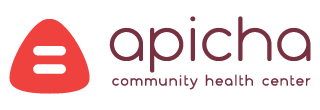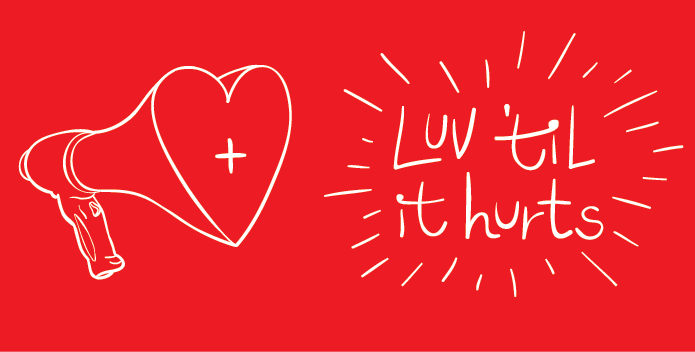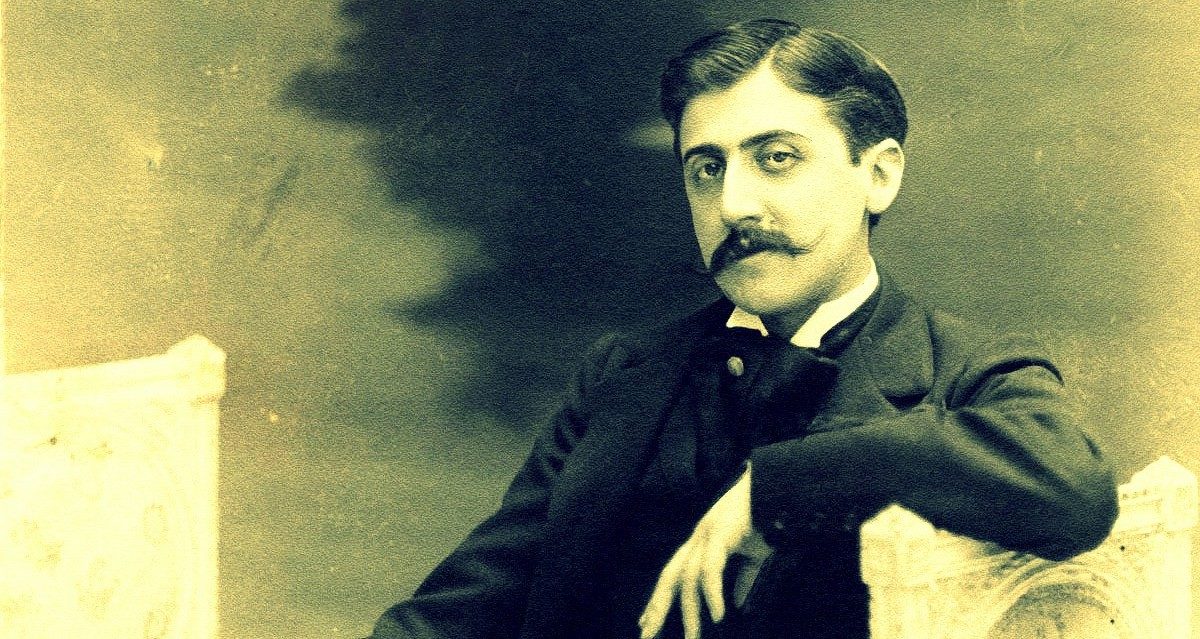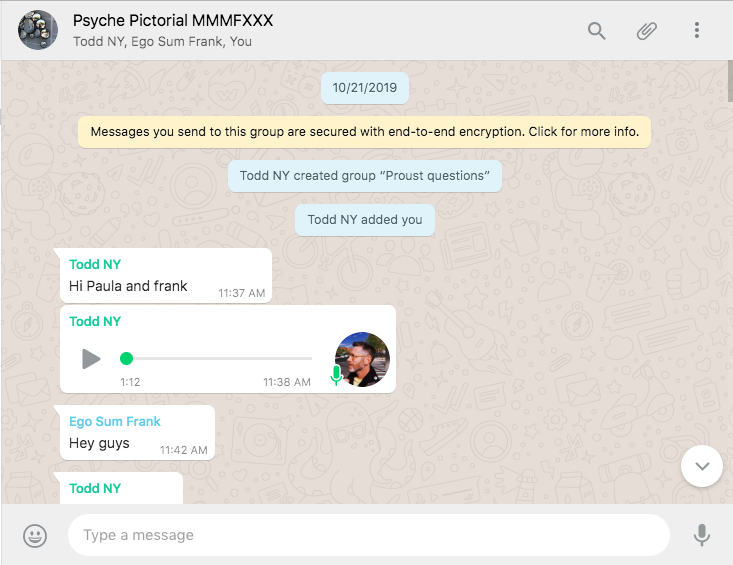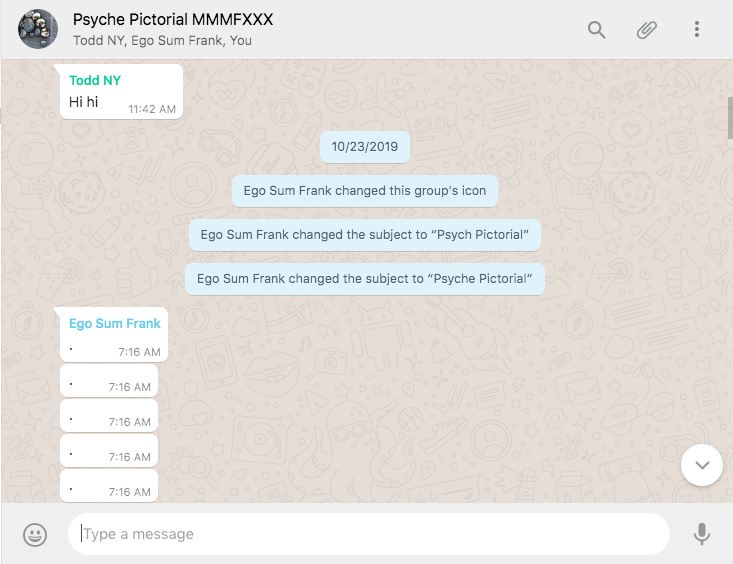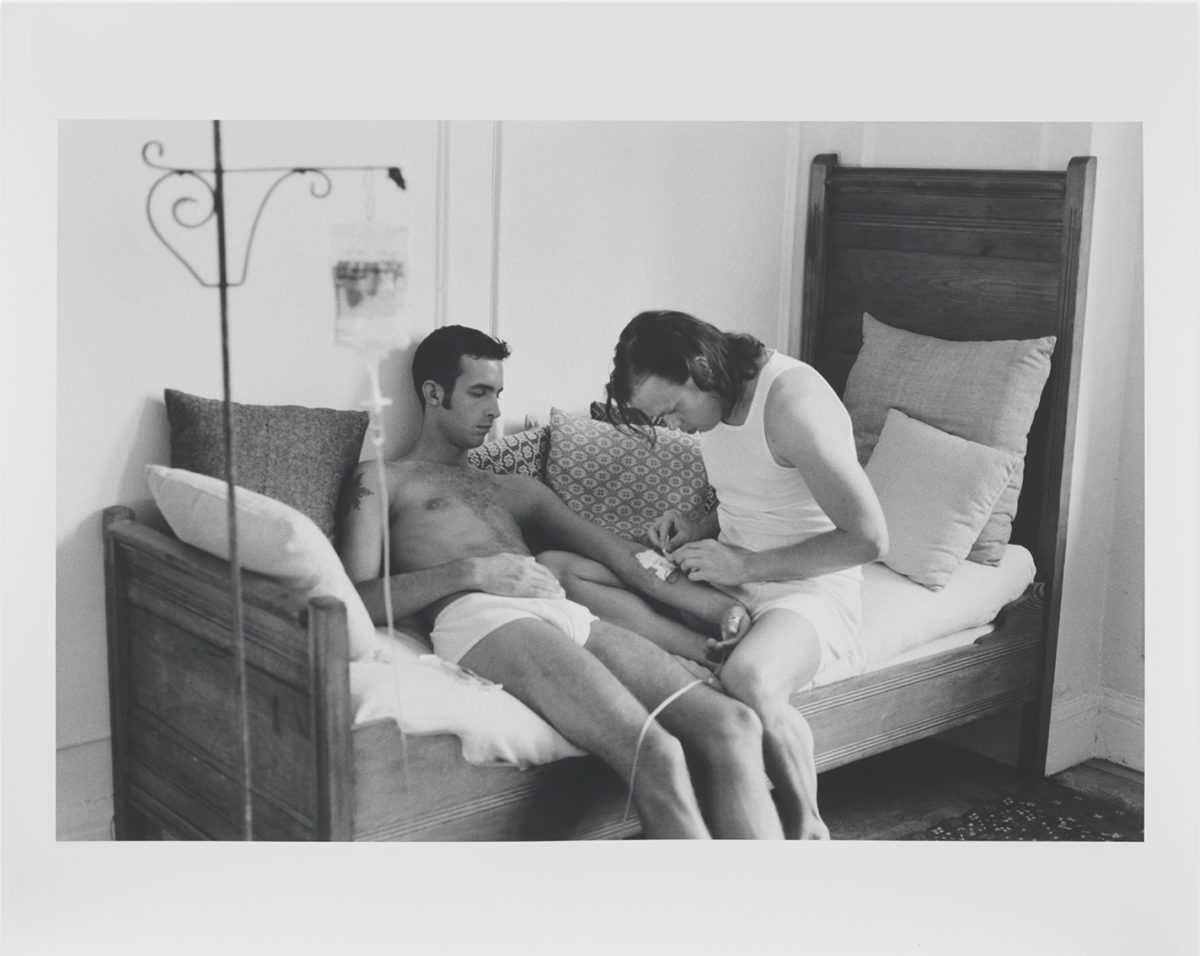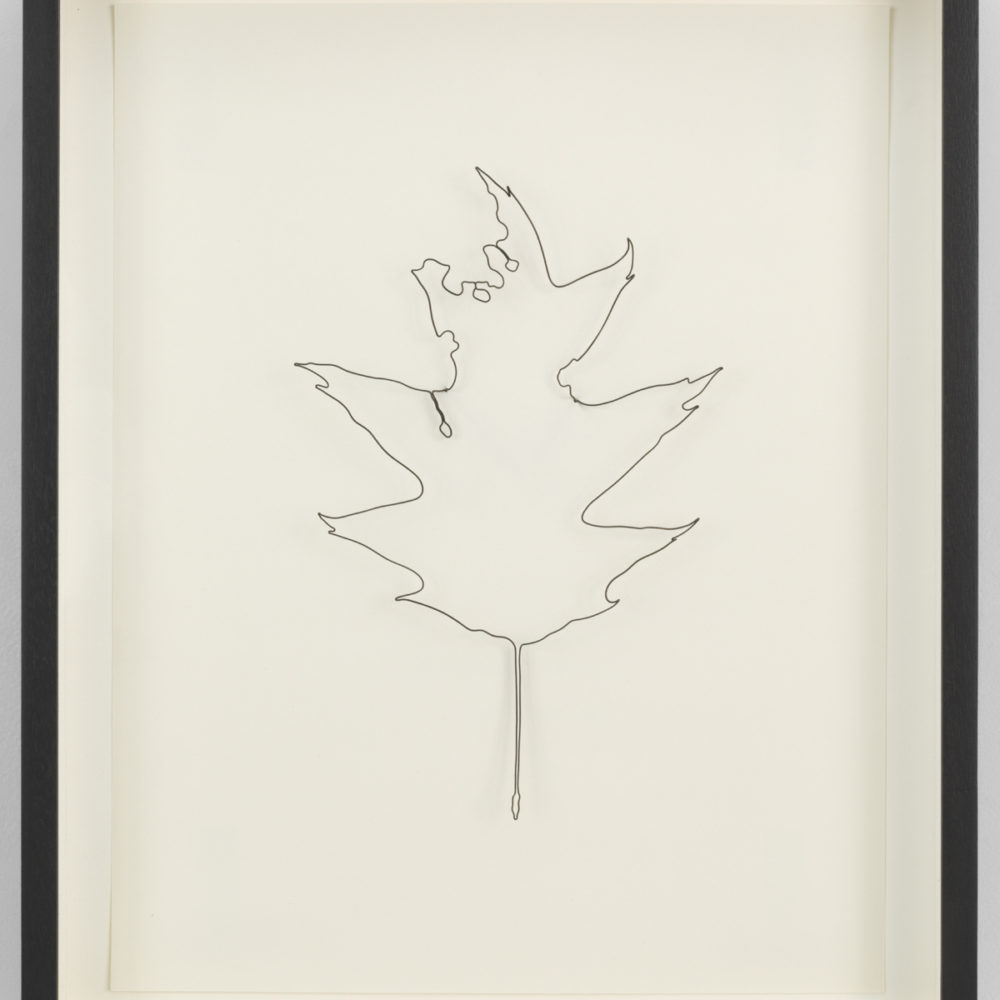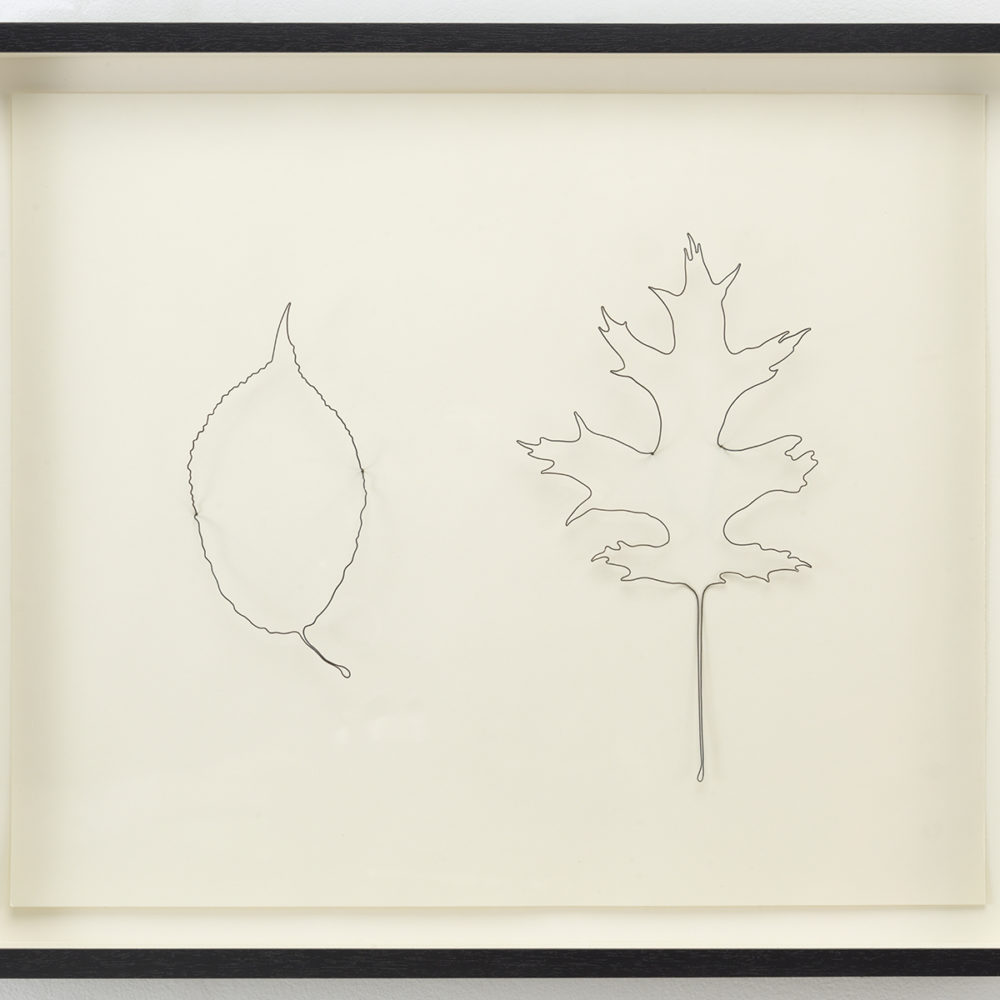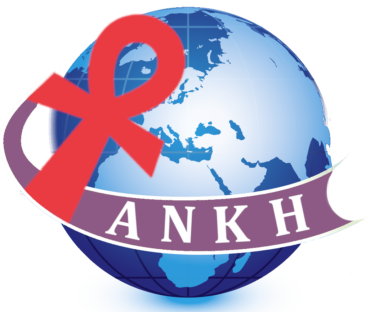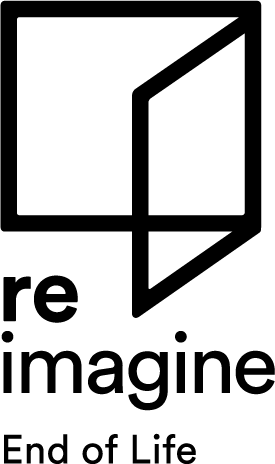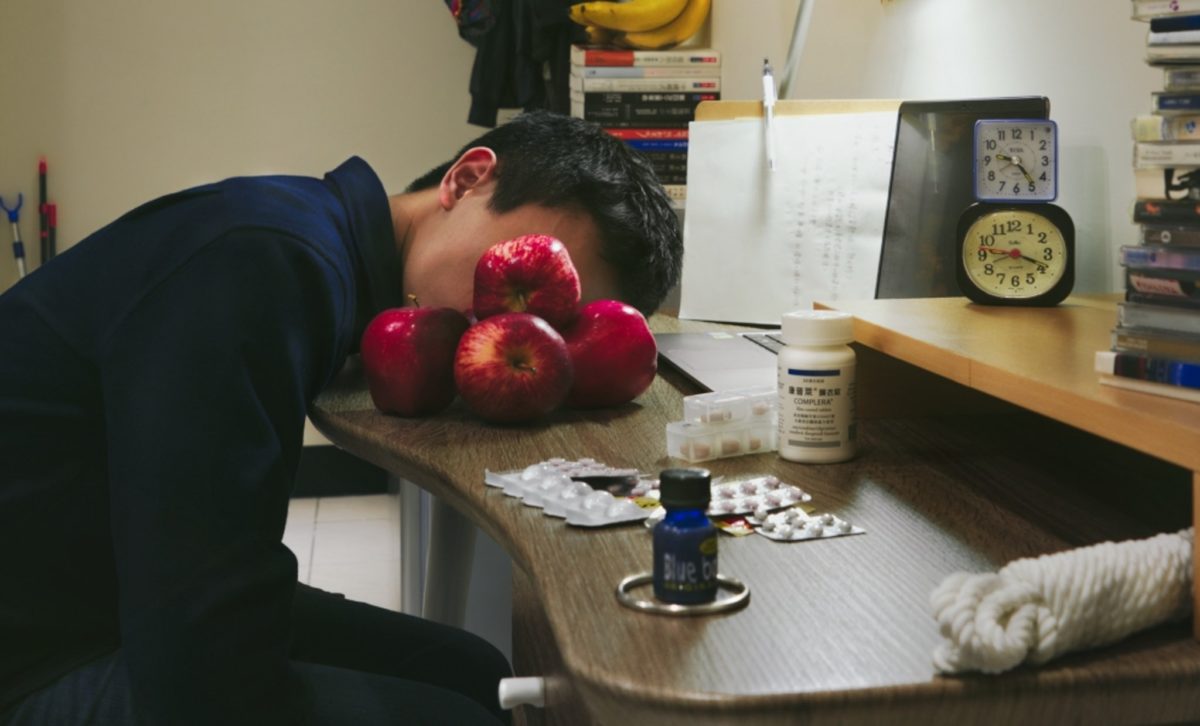Character Development à la Proust
[*I totally misunderstood what you wanted me to do with the ‘Proust Questionnaire’ and just answered the original. I get it now … you’re gonna ask me these questions in a new fresh way. Is that it? Go ahead, and we’ll link my new fresh answers here!]
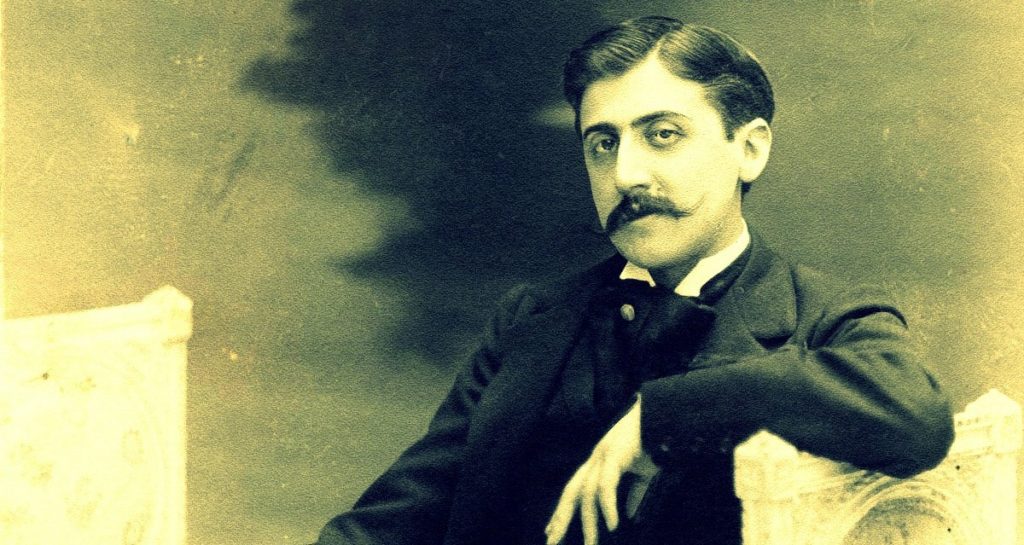
hey ego sum frank (aka Dr. Prof. ego sum frank),
I want to commend you on your new pursuit. While I’ve not yet visited the offices of MetaMorphineMachineFuriosaXXX, I imagine it to be a hybrid pharmacy and yarn shop. I even heard you all make quilts there. But before I would normally digress, let me answer these 35 questions that Proust used to ‘size up’ a character. I would like to assume the character of the difficult artist. I suppose this is somehow the real me; I’ve been called it with great regularity since I began the Luv ’til it Hurts project just over a year ago. I am starting to believe it, and therefore I’m ready to answer this particular MMMFXXX inquest.
Proust doesn’t really float my boat, but I would like to consider his answer to the first question (in both 1890 and 1896) as I begin:

- What is your idea of perfect happiness? Equilibrium. Not explaining to capital ‘C’ curators what broad small ‘c’ curatorship can be. The phrase ‘curatorial futures’ just happened, but I’m pretty sure it was an early morning coffee fart.
- What is your greatest fear? That I’ll never get a chance to tell you what I’m working on. That perhaps I’m wrong about what art is and I’ve fooled myself, but not you. You have stopped listening and I don’t know it yet. Abandonment.
- What is the trait you most deplore in yourself? This rambling. The voices that all want to be heard at once or with slight hierarchy. I take some drugs to correct it though, don’t worry.
- What is the trait you most deplore in others? Their piss poor attention spans.
- Which living person do you most admire? I think Robert Wilson, but only if he responds to my request in the way I want him to. My mother and father both trump Bob, but I struggle to find ways to show this admiration to them, and suppose perhaps that it is a different emotion. The name of which will come to me when I learn how to communicate better.
- What is your greatest extravagance? Living between NYC and São Paulo. The things I get to do having a generation of middle class-ness behind me.
- What is your current state of mind? I have a drug-addled mind. I take two pills a day for HIV and another for chronic depression. However I have proof (oral history) of my difficultness pre-dating my drug dependencies.
- What do you consider the most overrated virtue? Straightforwardness.
- On what occasion do you lie? I omit lots of information. Since people usually like it when I stop talking, this is just like quietening one or two voices down to a level that you are speaking with a two-dimensional me. I omit the details of having my iPhone stolen when my mom sees that I ordered a new one on our family plan’s insurance. But then when she masks her care for me with an ostensible concern over the phone hardware, I embellish the muggings to show her a glint of danger and work her ‘guilt bone’ for mis-applying her sympathies (to my phone instead of me) in the first place. I think on average I lie slightly more than the national index suggests. But I do not consider myself an outlier.
- What do you most dislike about your appearance? I wish I could get a tan just once in my life.
- Which living person do you most despise? Heidegger has come back to prove a point with Trump and Bolsonaro. I want him to die again. I want Hannah Arendt and Marielle Franco to come back to life in his place.
- What is the quality you most like in a man? Most male qualities repulse me (even in myself); I’ve known that I’m a lesbian for much longer than I’ve been arguing with them.
- What is the quality you most like in a woman? Tina Turner is from West Tennessee and Dolly Parton is from East Tennessee. I am from middle Tennessee. Motherhood. I like my mom too too much! I have a joke sometimes I set up by asking her if she knows how I became gay. I’ve already told you the punchline earlier in my answer.
- Which words or phrases do you most overuse? I want.
- What or who is the greatest love of your life? I will not answer this question. It is a trap. Fuck you, Marcel Proust.
- When and where were you happiest? I imagine myself to have been an avid lap swimmer in the womb. Yesterday at a poetry reading. That’s my answer. Brooklyn. Now.
- Which talent would you most like to have? I would love to have extreme right-hand dexterity on an old fashioned desk calculator. I would love to have races and finish my taxes. I would use this dexterity for many more things.
- If you could change one thing about yourself, what would it be? I have this wart on my hand that no treatment seems to move. Take it away now, please.
- What do you consider your greatest achievement? Survival.
- If you were to die and come back as a person or a thing, what would it be? I would want to be Bruno Latour’s sense of humor. Full stop.
- Where would you most like to live? São Paulo and NYC, with frequent trips to Cairo and Nashville.
- What is your most treasured possession? My wedding ring (the first one). I also like a horseshoe ring my dad wears, but I don’t want to inherit it ever.
- What do you regard as the lowest depth of misery? Abandonment…
- What is your favorite occupation? Making things. Luv and otherwise:)
- What is your most marked characteristic? A subtle potbelly that situates me somewhere between bear and cub. Bruce Willis told me how sexy it was in Pulp Fiction.
- What do you most value in your friends? Loyalty and long-term loyalty.
- Who are your favorite writers? Kafka, Lispector, Kadare, Soyinka, Winterson, Farah. Gonna read Ocean Vuong now that he’s a MacArthur genius.
- Who is your hero of fiction? Elpenor, full stop. I’m still learning the why for. I need more tutelage, Ismar Tirelli Neto.
- Which historical figure do you most identify with? Howard Zinn.
- Who are your heroes in real life? I respect Glenn Greenwald’s work, but he is not my hero. The last Berlin Biennale, Zé Celso’s Roda Viva, and various other contemporary loudspeakers repeat the Tina Turner line and suggest ‘We Don’t Need Another Hero’ … I don’t not find an easy answer here. But because the theme is also HIV somehow, I’m gonna say South African Justice Edwin Cameron. I have some friends in Egypt who I also feel ‘hero-y’ about but whom I won’t name.
- What are your favorite names? Lanier. I share middle names with Tennessee Williams. I dig it righteously.
- What is it that you most dislike? Giving up.
- What is your greatest regret? Not being in conversation with my former wife.
- How would you like to die? I would like to know my assassin, and get to advise him/her/they on how to do it.
- What is your motto? Encouraging the unadvisable since 1973.
Proust’s Questionnaire taken from “35 Questions To Ask Your Characters From Marcel Proust”
Think Twice Questions for Luv
My name is Todd Lanier Lester and I started the project, Luv ‘til it Hurts, a two-year project on HIV & stigma. The Think Twice Collective has agreed to join the LUV ‘coalition’ … I’ll explain what that is along the way, but just wanted to say thanks for being in an open-ended conversation with me. The last project I co-made, Lanchonete.org was a five-year investigation of the right to the city in São Paulo, and also took a collective form. I enjoy the pace and other characteristics of collective decision-making. freeDimensional, a 10-year project on free expression and artist shelter was the first of a three-project set that have spanned almost 20 years. What connects the three projects is that they are all durational, rights-focused and open to multiple stakeholders.
I really appreciate the questions Think Twice came up with and appreciate your attention to my project.
Paula Nishijima (a Think Twice member) and I met in Milano at ENGAGE, a Public School for Social Engagement in Artistic Research hosted in October 2017 by Via Farini. Paula is Brazilian and I live in Brazil, so we started there. That was followed by a Skype chat with the group in Leiden (Netherlands), and an ensuing discussion about our ‘projects’ being in dialogue. I’d like to dive into the questions:
1- What is “Luv ’til it Hurts”? Why did you start it?
LUV is a two-year project on HIV and stigma. In the FEATURES section entitled Field Notes, I discuss some of the parameters I apply for the making of a durational, rights-focused, multi-stakeholder work. I share the ups and downs of this style of ‘making’, and try to point to ‘spots’ of learning from both my previous projects and those of other artists. I plan to keep this section going throughout the two years. In fact, these are the field notes for a book I’m writing that focuses on methodology and looks at a twenty-year period of such art making. It’s a different and related project I’m working on as I shift more into writing. I first presented the ‘hinge’ in my work between LUV and some research writing I’ve embarked upon at the Economy and Society Summer School, a weeklong doctoral symposium co-hosted by University College Cork and the Waterford Institute of Technology, bringing together scholars from diverse disciplines to discuss fresh perspectives on ‘the economy’; the market, the state, production, consumption, redistribution, value, money, work, commodities, poverty, welfare, inequality.
[*Paula, when we met in 2017, Lanchonete.org was not quite over yet (and still isn’t:). I was already rabidly note-taking for the book, but probably didn’t yet know LUV was going to be a project in this series. I have had the idea for an HIV-related project ever since I contracted HIV in São Paulo some five years ago. In Milan I showed the Queer City film, representing an important ‘episode’ of Lanchonete.org, and actually the most rhizomatically robust of the various sub-projects/foci that comprise the five-year research platform of Lanchonete.org on the right to the city. In fact, Queer City continues still in various forms. Queer City was the way I began experimenting with HIV themes in the hybrid artistic director/curator/ administrator/producer role I assume for durational projects that I set off and forecast end dates. I proposed Queer City ‘into’ Lanchonete.org just as any of the multiple stakeholders could propose and develop ideas into action. When I use the words ‘producer’ and ‘action’ herewith, I’m referring to Walter Benjamin’s 1934 address at the Institute for the Study of Fascism (Paris), The Author as Producer.]
I can jokingly say that I’m tired of making multi-stakeholder projects. But I also plan to have fun with the last one, Luv ‘til it Hurts. What I mean is that I plan to use some of the methods and tactics from the first two projects in order to lean-down bureaucratically and shorten (to two years) the LUV project … rather abstractly. But at the same time, LUV is the most personal of the three projects I refer to here. I started it because I’m HIV+. I started it because it is personal. But, too, I believe it can have a ‘benefit’ (as such) on a macro level.
2- How did LTIH start?
In February of 2018 I received an unsolicited R&D grant. I had mentioned to a colleague in philanthropy that I planned to make a project, but I didn’t say what it was. This was an exciting encouragement, and frankly the first time in my 20-year practice that I have received money in advance to work on a project. That money was used for making a website and paying people. Most of the money was redistributed as re-grants to initiatives such as Humans as Hosts, Coletivo Amem, the Houses of Zion and LaBeija, participation in the 2019 holiday Love Positive Women (a project by artist, Jessica Lynn Whitbread), creation of the LUV game with a team of Egyptian designers, etc. In discussion with Taiwanese artist, Kairon Liu we decided to make a limited edition postcard set from his Humans as Hosts project, which he carried to the 2018 International AIDS Conference in Amsterdam. In a very useful way, this served to launch the two-year period of the project, and it therefore ends around the time of the next international AIDS conferences in 2020 in Mexico DF and San Francisco.
I mention above (when referring to Queer City) that I have the prerogative to create/direct/lead a portion of the LUV project and invite others to participate. This includes corresponding with others and writing for/on the site; designing a game with other people; collaborative events; media partnership; playing the new game together; and sharing in the construction (um, conjuring) of the ‘end game’ of the project, which will be an artist-led, philanthropic device offered to the Elton John AIDS Foundation.
At the same time, the projects have historically been flexible enough to accommodate the ideation and leadership of other artists, participants or stakeholders. Looking back at freeDimensional, somewhere around the midpoint, artist Sidd Joag was hired to direct the organization. One of the first things he did was to create new schematics for how freeDimensional explained how danger can affect global artists and how the project addressed this urgency. You can see visualizations in the 2011 Artist Residencies & Conflict Areas event publication, and they carried forward to illustrate our most comprehensive output (an artist safety guide) as a project, the freeDimensional AdvoKIT (download). For Lanchonete.org, there were similar ‘episodes’ led by other participants. For example, Zona da Mata is a project by artist Rodrigo Bueno who participated in one specific way focused on the environment. Another way to see this is that Lanchonete.org participated in Rodrigo’s project for the year, 2016. And, Episódio Haiti was led by Raphael Daibert who participated in all the activities of Lanchonete.org, having helped to launch the project from the beginning. This was natural as his focus is on migrations.
Here you asked me how it started and I’m about to tell you how it will end. One is that we might be able to say something about the philanthropic device by the time of the AIDS conferences. In fact, I’m working on a graphic zine with artist Niki Singleton that should be ready by February 14, Valentine’s Day 2020. By that time we will amp up our plan to reach Elton, and in the meantime someone will hopefully ‘steal this idea’ and run with it. What I’m saying is that the duration, start and end dates are both important and somewhat arbitrary. The projects don’t stop on a dime. And, if they are launched well–at least inter-planetarily or intergalactically–they keep advancing even after the end date. These ‘durations’ allow for a form of accountability to the stakeholders, communities and demographics that the projects include and address.
3- Why is it an “interplanetary” project? and why “galactic”?
I am working with an old friend. Here is where I brag on a buddy, Adham Bakry. He is mentioned in this article, Street Art Illuminates Egypt’s Lingering Problems. Check him out. When freeDimensional was moving around (it had mobile desks for a year each in ‘residency’ in the Middle East and Cairo specifically at the Townhouse Gallery and South America via a residency at Casa das Caldeiras in São Paulo) I met Adham and he did some of the original design work for freeDimensional in Cairo, joining the team for the remainder of the project. He then drew the first schematic for me when dreaming up Lanchonete.org. There was a lot going on in both regions at the time in residency field, and these two cities provided a look into the regions. Around that time I led the writing of desk studies on residency practice in each region for some partners whose names I forget. I should find those two documents for my site:)
The idea for Lanchonete.org came, of course during my freeDimensional residency in 2008 at Casa das Caldeiras. My friend Joel Borges who created TodoDomingo at Casa das Caldeiras (as well as its international residency and various community programs) both welcomed me on that 2008 residency and has been a part of the ideation for Lanchonete.org from the beginning. He serves as the President of the Associação Espaço Cultural Lanchonete (the cultural association/ entity under Brazilian law) until now.
So for one, I’m working with partners and friends who have been stakeholders to past projects. I’m asking them to perform in certain ways, perhaps building on past actions. I raise money to pay them:) I’ve asked them to help guide me … to help me get the maximum out of the idea based on how we know how to work together.
Adham and I know how to make interplanetary and intergalactic projects. I had to urge him to give me first designs early and not perfect them. I wanted it a little raw. But too we agreed on a face-to-face design session that was this past March. I would go to Egypt (Port Said) and see into his current project, a popular heritage museum with a revolutionary mentality. Pedagogy and learning and local change. I would engage his project at the level I wanted him to engage mine. We would eat fish together at the Suez Canal and take our bikes on the ferry to Asia. I would understand what he’s going through, and he would understand the same in me. We would care for each other at that basic level. We would reconnect a little before making work together. We would break bread… to go with the fish. I would meet his wonderful colleagues on the museum project and revive my interest in the Arabic language.
In the richness of ideas that comprised those days in Port Said and Cairo, an idea sprung up for a game. It came from Saif, a 23-year old guy from Port Said, but with Cairo-savvy. He said, why not model it after Exquisite Corpse, a game I’ve come to learn is played all over the world … sometimes with image continuation and others with words. Before I even understood what he meant, he gave me the scenario of going into a Cairo cafe and seeing an iconic sticker/tile on the back of a laptop, and it referencing the LUV project, or game as it were. That one would know that the person with the laptop was cool with HIV .. or something like that. You all at Think Twice are thinking about language. I was in Port Said in a café w/ Saif, Adham and others. I was acting a little queer. I had black fingernails. The manager turned off the radio, and waited for us to leave. So, Saif is not wrong to consider a ‘safe’ way to play, as such…
Or, another answer as question: Don’t you think there are enough ‘global’ things, organizations and such? If what constitutes art can sometimes be called an art world, shouldn’t we perhaps board the first spaceship out?
4- What is the aim of the “coalition”?
The coalition is for doing exactly what we are doing. For having a discussion. You’ve asked me some questions that find me in a methodological and rather light mood. I’m heading to NYC soon to launch a publication on Artist Safety Hosting and it’s been a throw-back to some earlier ideas. The coalition is for ‘doing something’, and I’d really like for folks involved to understand what I want to do with the philanthropic device, and perhaps lend a hand. But at the very least they should play the game with us.
5- How are you featuring this “gamification” in your work?
Saif and I jammed on the game idea sitting in a circle of ten guys on the floor drinking the booze Adham had gotten at the airport using my ticket stub for duty free. We watched videos and smoked hash. Some of us did. I laughed at what, in Arabic, made them laugh. We spent time together. By the next day in the office Adham was ‘on it’ .. he doesn’t like the virtual side of things (preferring the street stencil), so he wasn’t thinking anonymous, multiplayer (online), but rather the logic of the game and design of the tiles. What might become iconic and end up on the back of a laptop. In Cairo or New Delhi in a cafe. Adham poo-poos the idea of a virtual game, while introducing me to ‘his game guy’ Sanjay in New Delhi, saying ‘he’s the one who can do that for you … I’m doing the first part.’
Here’s the design challenge I posed to Adham and his team. I was already almost sure I would treat the LUV project in three acts, and that Adham’s (and the ensuing game) would be ACT I. I had come to Port Said to get some work done, big picture work. The challenge:
I’m making a philanthropic device in the midst of the LUV project, which should also be a discussion. We should talk about what we need, and what we can do / offer. We should make a new ‘device’ to help out. On HIV and stigma. As artists. And/or poz people.
HIV is personal. By March I was already 9+ months into the project. I told Adham’s team that I would pull back on broad stakeholder outreach. I would seek out partners from past projects, but not specific to HIV ideas and work. I would reconfigure a team or ‘agency’ for the purpose of getting to the end(game), the device. I can say better later how Acts II and III move the process along.
I told Adham’s team that I needed an ‘activity’, something to do with a public. Something that would enlist stakeholders in a way I’d not tried before, one in which I did not ‘front’ each conversation. The activity would allow me to ‘deploy’ the evolving process of device-making into various contexts (art world and non). It should be good. It should look nice. It should open up online, social media and PR opportunities through its application. It should stand alone. It should be fun. A game.
It should be something so simple (perhaps more so than the philanthropic device that takes a whole two years to make) that it would open up countless new discussions that cannot be generated outside discussion.
OK, so we (Paula N. and I) talked, and I asked if Think Twice would be interested in helping to launch the game. The game is ready. You can get the gist of it in Thank you to Lois Weaver (ample version), and if you all are game, I’ll get you a game pack in the coming weeks. We already know that it launches in Grenoble on October 25th in French and Arabic, and hopefully Bogotá on the same day with Daniel Santiago’s project, Luciérnagas. So, I’m sure we can find a unique way to engage between LUV and Think Twice in this general timeframe and direction. It could take the format we find most useful. It could work/aim toward your potential meeting next Spring on the topic of language.
There are lots of ‘language’ angles in the project.
I think that if you give me the ‘go ahead’, I’ll consider how to communicate the game to Think Twice as we are developing ‘packets’ for Grenoble and Bogotá, so relatively soon. We are launching the game online on this year’s World AIDS Day, December 1. As well. Think Twice and the coalition can be a part of that. Somehow. The game changes as the ACT progresses, so we should really just play, and you’ll see.
6- What is action research and how is it developed and/or materialised in the project?
Oh gosh, what is algebra? I’m kidding. I was reading an article the other day that called ‘artistic research’ a discipline, area and method all in the same article without differentiating usage. Action research is perhaps related to grounded theory or various participatory methods. I figure phenomenology is a part of it. I am working on a book and PhD at the same time. The book is called Variations in Worldmaking. The PhD is in Sociology. My advisor, Maggie O’Neill has experience in action research. With all that in the ‘soup pot’, I decided to ask Maggie if she could help me tease out characteristics of my methodology, the methods I practice with, by keeping an eye on the LUV project. I produce writing on the overall book, but she knows that until the end of the two-year period (until July 2020) I have to give special attention to the final project in the three-part series. I let her know when I post new field notes online. But it is my responsibility to pull those into the research I’m working on. It is my design to have the final project, action-like hinge with the research that uses the timeframe of the three projects taken together, as well as their rights-focused themes and those taken up by other artists interviewed for the research. What a mouthful.
7- What are your other projects you inspired yourselves to when you founded LTIH?
The artists who got together in various ways like the Treatment Action Campaign, ACT UP, VisualAIDS and many other activist and artist-led (or fully included) endeavors. I want to give a part of myself to help out. I want to do it in a way that invites others to join me. Something like that. I think at a later stage in our discussion I’ll be able to share the short list of artists I’m interviewing for the Variations book. That would be another way to answer.
8- what’s the difference between you and these projects?
Not much. That’s good and bad. I have a playful writing project coming called El Mejor Karate. It will have a site. It will have some things to say about the ‘splitting’ we do and don’t do as artists when we make immersive projects. Adham is involved in it. It’s coming soon. The website will be www.tllester.info/elmejorkarate someday soon.
9- How does this ‘personal aspect’ you mention influence the methodology or the way how you engage the stakeholders in relation to the previous two projects?
Up above I mentioned the design challenge I went to Adham and team with. Working on HIV elicits emotions amongst the artists and activists who share their stories. I want to think that multiple stories can be told through LUV. In the beginning however, I ran at it too hard. I got bruised by some of the initial engagements. In some of my field notes, I speak about this ‘emotional heat’ that I see as both essential but also to be ‘handled with care’. If this seems vague, please make sure to read the Benjamin text I’ve mentioned above. I think it is fair to say that the first two projects hold themes that affect me but don’t infect me. That’s a bit crass I suppose. I care about artist housing and safe haven, and would want it if I needed it (freeDimensional). I love cities and living in them. I pretend to live between NYC and São Paulo after all. To have my eyes open (in these two places and others I travel to) is to be in a discussion on the right to the city. But for LUV I need some space. If it gets too hot for me, I don’t produce. Ask me more, and I’ll be explicit about what I mean. The ‘art world’ (as such) is not a place that automatically gives care. I think one needs to have support to make a project that touches on the ‘autobiographical’ … I chose sociology for its ability to accommodate personal narrative.
10- What would you say is the necessary quality, in order to be able to contribute in the LTIH projects?
Help me make some noise. Ask hard /nice questions like these. Let’s find a discursive way to launch the game together in your context. I travel to the Netherlands a lot. I’ve spoken at Leiden once. In the process of my research in Cork, we are engaging the gallery at the university. When I was last in Cork (second city in Ireland), I was on Grindr and someone thanked me for sharing my HIV status. When I talk to my colleagues in Cork (the ones involved with my research), I ask them, ‘what do we need here?’ There is a conversation to be had in Cork, Ireland. There is a conversation to be had in Leiden, Netherlands. Please oh, please do not let us keep this at the treetops of discussion. With an old colleague I’m discussing how the game travels with a theatre piece around Zimbabwe. Let me discuss now with you, new colleagues how the game plays out in your context.
11- How can interested people contribute to the project and collaborate with LTIH?
Make LUV.
A Conversation with Artist Eric Rhein
New York based artist Eric Rhein speaks about his two exhibits, Lifelines, which
have been on view in his home state of Kentucky.
Lifelines is an exhibition at two locations in Lexington: at Institute 193 through
July 27 th , and the Lexington’s 21c Museum Hotel, through the end of August.
Todd Lanier Lester, of the Luv ‘til it Hurts campaign, asked Eric about the
shows—and his current and ongoing concerns.
TL:
What is the significance of your showing your work in Kentucky?
ER:
First, I want to thank you for having this conversation with me. As it happens,
today is the last day of the part of the show that’s at Institute 193. While the
companion show at the 21c Museum Hotel runs through August, exhibitions are
fleeting and only those who are geographically near have the opportunity to see
them. So, via this conversation, it’s rewarding when my artwork and the history
embodied in it can contribute to the conversation around HIV and AIDS, beyond
the walls of those exhibitions.
TL:
But tell us: How is Kentucky a special place for you?
ER:
Presenting Lifelines in Kentucky has a particular resonance. My family roots are
in Kentucky, and a sense of heritage and lineage are important to me. My Uncle
Lige Clarke was a formative pioneer in the Gay Rights movement of the 1960’s
and 70’s. He and my mother grew up in Hindman: a tiny, rural town in
Kentucky’s Appalachian Mountains—yet he had the fortitude to help lead the
way to an expansion in gay identity through his activism, like helping to
organize the first picket for Gay Rights at the White House in 1965, and also
founding and editing the first national gay newspaper, Gay, with his partner Jack
Nichols, in 1969. I see my drive to include my HIV status in the context of my
artwork as being linked to my uncle’s activism.
TL:
How does your memory of your uncle tie in with your own growth?
ER:
My uncle had a spiritual core, cultivated through his studies of Yoga and eastern
philosophies, and his appreciation of the great American poet Walt
Whitman—in fact, he always traveled with a copy of Whitman’s book-length
poem, Leaves of Grass. My uncle’s legacy—a liberated vision of life as a gay
man—was passed to me through my encountering autobiographical books
which he wrote with his partner Jack Nichols. That was just when I was entering
puberty and finding myself. Their book about their relationship and activism, I
Have More Fun With You Than Anybody, continues to inspire me. Further, AIDS
activism—which has a spiritual aspect—has contributed to the evolution and
visibility of LGBTQ identity.
TL:
I’m quite taken with the title of the two shows: Lifelines. Where does this title
come from?
ER:
In the Institute 193 show is a series of three photos that I call Me with Ken. A
photo, from that series, is titled Lifeline. So the name of the overall exhibit
comes from that—yet reaches beyond to encompass themes running
throughout my work and my purpose for showing it. In that Me with Ken series
(which is from 1996) I’m pictured with my then boyfriend Ken, and it was
during the summer that protease inhibitors were initially released. Due to my
having been on those new medications, as part of a study, I was rapidly gaining
a renewed vitality. Ken hadn’t yet accessed the protease inhibitors, and was on
daily IV drips for declining health. Hence “lifelines” refers to this, and to a larger
interconnectedness as well. The intimacy and tenderness, heightened within
that period of shared vulnerability and mutual-caring, is shown in that series of
photos—and is something that I hope runs through my body of work, from my
photographs –to my AIDS Memorial Leaves.
TL:
I know that your project, Leaves, is an important part of your body of work. Can
you tell us about it?
ER:
Leaves is an ongoing project which is a growing memorial to those I personally
knew who died of complications from AIDS. For each individual (and sometimes
for couples), I express my sense of them through a wire outline of a leaf.
Lifelines also points to an intergenerational exchange that is important to me.
When Paul Brown, the director of Institute 193 first came to my studio, two
years ago, it came out that he was about to turn 27, the same age I was when I
tested HIV positive in 1987. He had gravitated to my portfolio of photographs
depicted me and my companions in the 1990’s, sighting that they affirmed an
intimacy during the height of the AIDS epidemic, which contradicted the
narrative he’d been given when he first came out. Paul shared that his coming
out, like many men of his generation, was colored by associating being gay with
HIV—and, consequently, fear of sexual expression. Shifting the narrative he’d
inherited to a more expanded one, was primary to our working together.
TL:
Can you say a bit more about the relation of HIV to your artwork and life?
ER:
Having lived with HIV for just over three decades, I’ve found that there’s a real
potential for transcendence—yes, even within this complex history of
vulnerability, loss, and survival (and, maybe, sometimes, because of it.) Sharing
my artwork, which came through my experience of HIV and AIDS—and sharing
it with younger generations—brings a sense of purpose and healing.
TL:
I hear that you have written a piece that corresponds with many of the themes
you’ve explored in your artwork (and which we just talked about). Can you tell
me more? Will we have access to it soon?
ER:
Yes, “The Gathering” is a piece that I’m happy to share with the Luv ‘til it Hurts
community—and I’m glad to send it along soon, to be available on the website.
TL:
One more thing: is it true that there’s a book coming out on your work?
ER:
Yes. It too will be titled Lifelines—and will come out early next year.
= = = = = = =
Lifelines, an exhibit of Eric Rhein’s work, continues at the 2c Museum Hotel
through the end of August, 2019.
21c Museum Hotel
127 West Main Street
Lexington, Kentucky 40507
https://www.21cmuseumhotels.com/museum/exhibit/eric-rhein-lifelines/
Eric’s website is: http://www.ericrhein.com
= = = = = = = =
Interview With Ankh Association
TL: A mutual friend and queer activist in Cairo was helping me find a place to stay in Paris only a few days before my trip. I somehow end up sleeping on your couch in the suburbs of Paris.
You two make the Ankh Association that supports LGBTQQI and HIV+ folks in the Middle East through an arts advocacy campaign. Can I ask, how you got here? Back in Paris and making Ankh?
ANKH: First things first, Nicolas is a French activist who has been involved for many years in various collectives defending minorities’ rights in France (LGBTIQ, women, migrants, etc.) while working in cultural cooperation between France and the Middle-East. Taha is Egyptian and has also actively been involved in the Human Rights field in his country, both as an activist and on a professional level. We met a few years ago in Egypt, where we were both involved in the local LGBTIQ community. By the end of 2016, due to different circumstances, we also began to be more involved with the HIV+ community, witnessing the numerous challenges and difficulties that one might have in Egypt in order to access testing, treatment, and especially dealing with religious and social stigmatization. For instance, we realized that there was almost no center where one can go to get tested, and the few existing places are being closed by the government. Now the only places where you can get tested are in government-run facilities, which are already in a very small number. Regarding the treatment, you also need to go to the government to be allowed to have access to it, which usually takes months, you never get to know the results of your test, sometimes the medicine is not available for weeks, or they change it without telling you… Of course not mentioning the way that HIV+ people are being treated by doctors and nurses, which most of the time results in them avoiding going to hospitals or doctors at all.
So when we came to France in early 2018, we started thinking about how to help change the situation there, so we decided to make an NGO that will be able to both support HIV+ and LGBTIQ people in Egypt, as well as to advocate and educate on matters related to sexual health, sexual orientation and gender identity, human rights, etc. This is why we established the ANKH association, and the first thing that we worked on was a sexual health campaign called ‘Know More’.
TL: The Know More campaign is online, and the byproduct is a traveling show called Points of Life for which you already have shows in Lyon and Grenoble lined up and 10 participating artists. How does it work? And, what is your goal … what will the viewing public understand after attending one of your events. Is there something you want them to know (or do) about HIV conditions in the region?
ANKH: We started the Know More campaign as an online Facebook page in Arabic, French and English, aiming to raise awareness in the Arab-speaking communities about sexual health issues, and HIV was, of course, a very big part of it.
In order to reach a different audience in Europe and to make more people aware of the challenges that HIV+ people in the Middle-East are facing, we decided to make an art exhibition based on testimonies by people living with HIV in Egypt that will be showed in various European cities.
So we had an open call out for 2 months asking people who are living with HIV in Egypt to send us artworks expressing their personal experiences, either through a small video, voice recording, photo, or text… We ended up receiving up to 8 pieces, from people of different ages, locations, and genders, each depicting how these people manage to live with HIV in their country.
We thought that setting up an art exhibition as a part of an advocacy campaign is a really effective way to reach people, as it is based on direct testimonies, thus creating a direct connection with the audience, through very simple art forms like mobile videos, photos, or recordings that are accessible to anyone.
TL: OK, then what if another city wants to have the Points of Life exhibition. Would you take it anywhere or do you prefer that it be received in a specific way (locations) whereby your overall strategy is advanced?
ANKH: We will be more than happy to see Points of Life being exhibited in various cities around the world! The whole point of the project is about encounters and sharing experiences, especially with different kinds of audiences. One thing that we are focusing on is for the exhibition to be shown in very different types of places, sometimes LGBTIQ centres, or art spaces, community centres, etc… Our technical requirements are really basic so it’s really easy to make it travel from one place to another. Also, the exhibition is usually introduced with a small speech about the situation of people living with HIV in Egypt, but we also like to have it linked with a more entertaining event like a movie screening, food, concert, party… Everything is possible, depending on the place where it is organized!
______________
To learn more:
Know More Campaign: https://www.facebook.com/know.more.campaign
Ankh Association: https://www.ankhfrance.org/
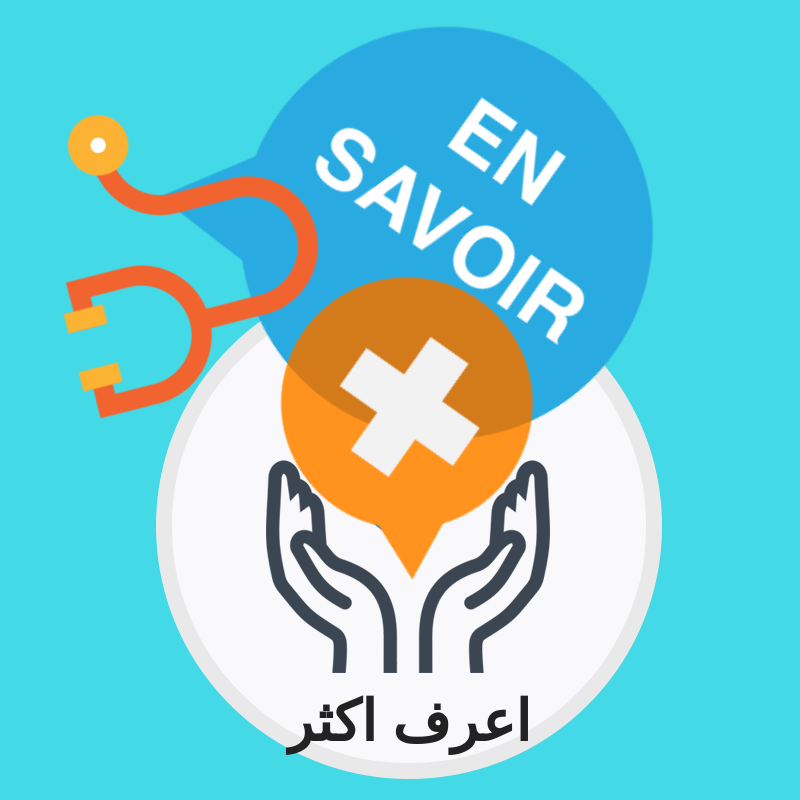
Eric Rhein: Lifelines
Our partner Eric Rhein opens a beautiful exhibition at Institute 193, showing from June 19 – July 24. Don’t miss it!
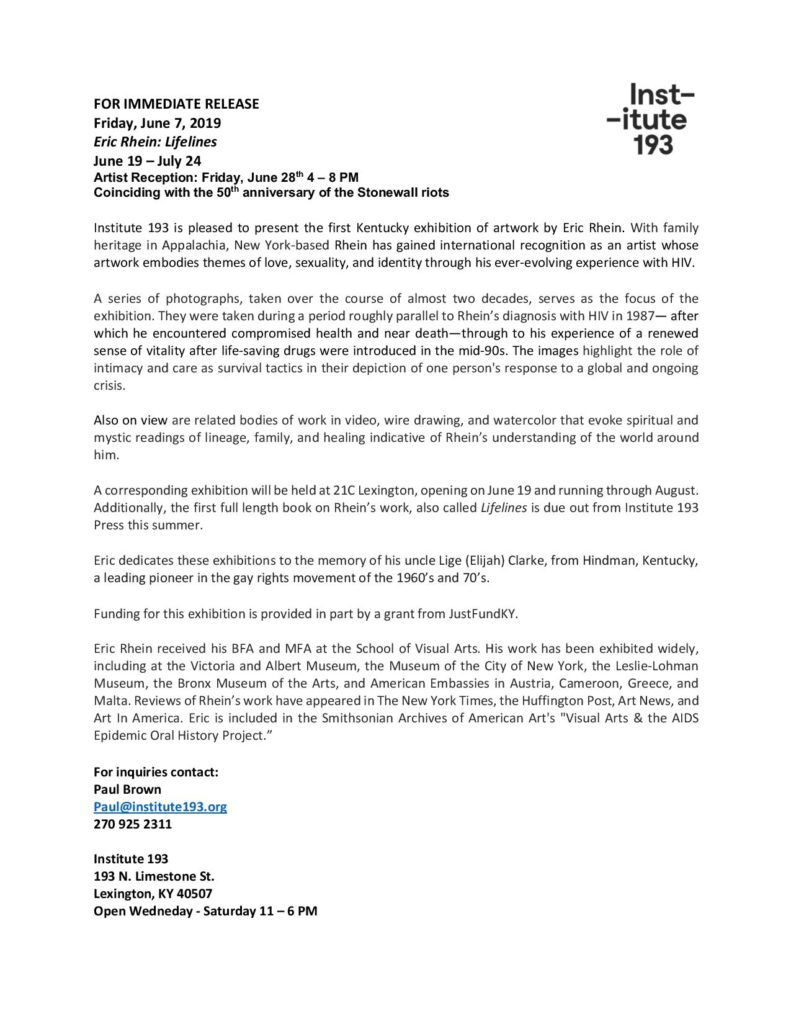
See: Institute 193’s Facebook event
Luv Till It Hurts by Kairon Liu
Opening Reception: Thursday, October 18 from 6-8pm
Exhibition dates: October 18-28, 2018
Gallery Hours: Wednesday through Sunday, 12-6pm
El Museo de Los Sures
120 South 1st Street, Brooklyn, NY 11249
(Between Bedford Avenue and Berry Street)
Curatorial Advisor: Adam Zucker, Theodore (Ted) Kerr
Organized by Luv ’til it hurts, and collaborating with more than 150 others to co-create Reimagine End of Life 2018.

Today, medical treatments help people infected with the Human Immunodeficiency Virus (HIV) have prolonged and ordinary lives, as well as prevent further transmission, but they can never kill the virus hiding within. Despite these advances, moral condemnation and discrimination against the disease continue. The consequences of this stigma are mental illness and distress, often generating greater suffering than the physiological disease itself. Until a true cure is found, shame, insecurity, and trauma will continue to afflict those diagnosed with HIV until our societies and communities change the ways in which we consider and support them.
Kairon Liu started his research with HIV in 2017 in Taiwan. The inspiration of Liu’s project, Humans as Hosts is his best friend, alias Tree, who has recovered from betrayal and sorrow several times due to his affliction. The photographs and archives created by Liu and the participants he encounters through his daily life and practice make evident that all human beings are exposed to the virus. We are all human beings, and we continuously face this threat, physically and/or mentally.
This exhibition is made possible by multiple supporters that Liu has engaged during his time with Residency Unlimited in New York. While the exhibition title reflects Liu’s ongoing journey to confront the universal value, it also reveals the first chapter of the artist-led discussion on HIV and stigma, Luv ’til it Hurts.This program is made possible with support from The Lily and Earle M. Pilgrim Art Foundation, Apicha Community Health Care, Candi Me, Ford Foundation and the Institute of International Education. Special thanks to Taipei Cultural Center in New York, Residency Unlimited, Artists Alliance Inc, Visual AIDS, Hetrick-Martin Institute, and Baboo Digital.
As a visual artist and photographer, Kairon Liu’s practice reflects his observations on diverse beliefs in human society through the creation of narratives exploring issues related to religion, disease, and universal values. Since 2017, Liu has been developing Humans as Hosts, a project focused on understanding the living situation of people with HIV and heightening awareness about AIDS. In collaboration with social networks, NGOs, and public health authorities, Liu gets to know HIV-positive individuals and invites them into his work. The resulting images/archives can be viewed as the proof/disproof of stereotypes, prejudices and stigmatization produced by societies.
This program has been made possible with support from Ford Foundation and the Institute of International Education. The Lily and Earle M. Pilgrim Art Foundation, Candi Me, Special thanks to Taipei Cultural Center in New York, Visual AIDS, Artists Alliance Inc, Hetrick-Martin Institute, and Baboo Digital.
Luv Till It Hurts by Kairon Liu, is part of Reimagine End of Life.
About Reimagine: Reimagine End of Life is a week of exploring big questions about life and death through art, creativity, and conversation.
For the last few months, artists, storytellers, healthcare professionals, faith and community leaders, and innovators across all five boroughs of New York City have been uniting to create a unique week of events that will prove to be reflective of this city’s diversity and spirit. With more than 250 events set to explore death and celebrate life from every perspective, we invite you to join us in questioning how we think about our most universal experience.
Visit www.letsreimagine.org/new-york to learn more!
Let’s bring death out of the shadows and into the light.


A discussion to be accountable to …
A discussion to be accountable to …
New generations of HIV/AIDS strategies
6-8:30pm, Saturday, Oct. 27th
See video of the House of Zion debut performance that preceded the panel discussion.
Free and Open to the public
The Center
208 W 13 St
New York, NY 10011
212.620.7310
A discussion to be accountable to … is a part of Reimagine End of Life in NYC, a week of exploring big questions about life and death. The story goes that two artist projects focused on HIV—Humans as Hosts & Luv ‘til it Hurts—‘met’ in NYC, and Reimagine End of Life festival is the context for an intimate chat and hanging out with friends. Making new ones. Seeing a new piece by Pony Zion. It looks like a panel, but it’s more like a ‘discussion’… on stigma and HIV in different parts of the world. New networks. New strategies. Right now.
6pm, Intro
- ‘Get your life’ performance by Icon, Pony Zion, House of Zion
- Brad Walrond reads ‘1986’, a poem chronicling the legacy of the Ballroom scene and the advent of black queer organizing in the face of HIV/AIDS pandemic
- Video Message from Coletivo Amem / House of Zion in São Paulo, Brazil
- Introduction of Luv ‘til it Hurts by Todd Lanier Lester (begins to moderate with Kairon after reflecting on the exchange between NYC and São Paulo)
6:30, Discussion
- Kairon Liu presents Humans as Hosts and the current situation in Taiwan
- Malaya Manacop (Hetrick-Martin Institute)
- Phillip Miner (APICHA Community Health Center)
- Ted Kerr (Curator)
7:30, Q&A / Broader discussion
8:30, Closing
Despite the fact that medical treatment is accessible for HIV positive individuals, the issue of stigmatization persists and manifests in unpredictable ways pervasively … globally. Antiretrovirals block viral replication and can prevent further transmission, however they do not counter the stigma related to HIV that can manifest as familial shunning, discrimination and moral condemnation against those who are diagnosed. These things jam up our mental health and arguably cause more suffering than do physiological symptoms. As we ‘reimagine end of life’ in relation to HIV, how do advancements in medicine and public health, a continually broadening global dialogue, and relative levels of peer-support—depending on geography, family acceptance and culture among other conditions—factor into the equation?
Starting in 2017 in Taipei, Taiwan, Kairon Liu began working with local NGOs, healthcare providers, and social networks to meet HIV+ individuals he would then get to know, interview in their living spaces, and photograph. This collection of stories grew to become Humans as Hosts, a collection of stories that tease out attitude, mental conditions and the general living environment of Kai’s subjects.
Luv ‘til it Hurts is a new campaign that aspires to become a meaningful support mechanism for HIV+ artists and their peers initiated by Todd Lester. Todd sees Humans as Hosts is a network methodology, whereby Kairon incorporates the lived experience and networks (healthcare and otherwise) around him into his interview and photo-documentary process. And, he would tell you that he is hoping to gain new friends in the process. Kai invited some of those friends tonight.
The discussion will consider how a few artist- and everyday practices address HIV awareness and its related stigmas. It will take a historical look through the lens of Ballroom. And, just like the artist practices of Kai and Todd, and the everyday roles of House of Zion, #HouseLivesMatter, APICHA, Hetrick-Martin, VisualAIDS and other groups, this ‘discussion’ is a process of meeting people and understanding things we didn’t before.
It’s still early. Please join us. Please help this discussion to be the continuation and evolution of other important talks … something we may all be accountable to moving forward.
***
Kairon brought Humans as Hosts to NYC this year through a partnership between Residency Unlimited and the Taipei Cultural Center in New York, and exhibits a combined series from the two cities at El Museo de Los Sures (Williamsburg) from October 18th thru 28st, a solo show called Luv ‘til it Hurts.
BIOGRAPHIES:
Todd Lanier Lester is an artist, writer and cultural producer. He lives in São Paulo, where he works with Associação Espaço Cultural Lanchonete—a project focused on the right to the city—with a group of fellow city dwellers. Todd founded freeDimensional, a network that helps artists in danger by providing safe haven in participating artist residencies, He is a Senior Fellow at the World Policy Institute and a Research Associate with both Laboratório para Outros Urbanismos at the University of São Paulo and Culturizing Sustainable Cities at the University of Coimbra. Todd serves as advisor to arts, rights and literary organizations in India, Mexico, Brazil, Germany and the US. freeDimensional (2003-12) and Lanchonete.org (2013-17) began a series of durational, rights-focused, multi-stakeholder art works for which Luv ’til it Hurts (2018-20), a project on HIV and related stigmas is the last.
As a visual artist and photographer, Kairon Liu’s practice reflects his observations on diverse beliefs in human society through the creation of narratives exploring different issues related to religion, disease, and universal values. Since 2017, Liu developing the project Humans as Hosts focused on understanding the living situation of people with HIV and heightening awareness about AIDS. In collaboration with social networks, NGOs, and public health authorities, Liu recruits HIV-positive individuals to volunteer as participants. The resulting images/archives are to be viewed as the proof/disproof of the stereotypical prejudices and stigmatization produced by the public.
http://www.kaironliu.com/
Malaya Mañacop is a social worker, health educator, and community organizer based in New York City. She began organizing work while she was a student at San Diego State University for her bachelor’s degree in Business Administration. She continued to follow her passion of social justice and organizing work in NYC, where she earned her master’s degree in social work from New York University – Silver School of Social Work. She currently works with Hetrick-Martin Institute (HMI), an after-school program that serves LGBTQ youth and young adults (ages 13 – 24). At HMI, she coordinates the Community Promise program, a paid internship program for young people living with HIV. Malaya’s work is rooted in healing justice, anti-imperialism, and anti-oppression, while centering queer and trans people of color.
Phillip M. Miner Queer Advocate and profiler of Queer Artists. He is currently the Director of Grants and Communications at Apicha Community Health Center in NYC, Founder of Outspoken Collection, and all around nice guy.
Canadian born Theodore Kerr is a Brooklyn based writer, organizer and artist whose work focuses on HIV/AIDS, community, and culture. Kerr’s writing has appeared in Women’s Studies Quarterly, The New Inquiry, BOMB, CBC (Canada), Lambda Literary, POZ Magazine, The Advocate, Cineaste, The St. Louis American, IndieWire, HyperAllergic, and other publications. In 2016, he won the Best Journalism award from POZ Magazine for his HyperAllergic article on race, HIV, and art. In 2015, Kerr was the editor for an AIDS-focused issue of the We Who Feel Differently journal.
Brooklyn born poet, author, mixed-media performance artist and activist Brad Walrond’s work is borne out of several overlapping Underground communities in New York City including The New Black Arts Movement, The Underground House/Dance Music communities, Black Rock Coalition, The NYC Ballroom Scene, and the black queer political arts and activist movements that arose in response to racism, homophobia, transphobia and the HIV/AIDS pandemic. Brad’s work is about identity formation and human consciousness at the intersection of race, gender, sex, and desire. Brad is a graduate of The City College of New York and he earned his M.A. in Political Science from Columbia University. Follow him on instagram and facebook @bradwalrond.
Pony Zion is a father, dancer, choreographer, performer, creative director and Icon of the House of Zion. He helped to take the House of Zion from NYC to São Paulo, Brazil.
Luv ‘til it Hurts and this panel discussion is made possible with support from Ford Foundation and the Institute of International Education. Additional support provided by APICHA CHC | Community Health Care in New York City.
Luv Till It Hurts by Kairon Liu, is part of Reimagine End of Life.
About Reimagine: Reimagine End of Life is a week of exploring big questions about life and death through art, creativity, and conversation.
For the last few months, artists, storytellers, healthcare
professionals, faith and community leaders, and innovators across all
five boroughs of New York City have been uniting to create a unique week
of events that will prove to be reflective of this city’s diversity and
spirit. With more than 250 events set to explore death and celebrate
life from every perspective, we invite you to join us in questioning how
we think about our most universal experience.
Visit www.letsreimagine.org/new-york to learn more!
Let’s bring death out of the shadows and into the light.


